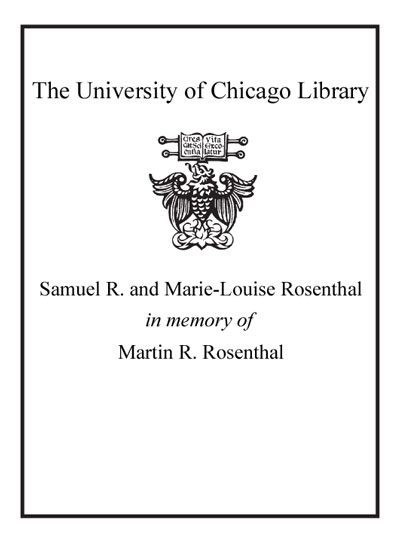Exchange rate policies in emerging Asian countries /
Saved in:
| Imprint: | London ; New York : Routledge, 1999. |
|---|---|
| Description: | xxviii, 427 p. : ill. ; 25 cm. |
| Language: | English |
| Series: | Routledge studies in the growth economies of Asia ; 13 |
| Subject: | |
| Format: | Print Book |
| URL for this record: | http://pi.lib.uchicago.edu/1001/cat/bib/3784977 |
Table of Contents:
- List of figures
- List of tables
- List of contributors
- Editors' introduction
- Acknowledgements
- Part I. Exchange rate policies in Asia: the evidence
- 1. Flexibility or nominal anchors?
- 1. The setting
- 2. The convertibility issue
- 3. Exchange rate choices: fixed rates
- 4. Exchange rate choices: flexible rates
- 5. Exchange rate choices: band-basket-crawl (BBC)
- 6. Conclusion: nominal anchor or flexibility?
- Appendix. Exchange rate regimes of East Asian countries
- 2. Discussion
- 1. The setting
- 2. Convertibility
- 3. Fixed rates
- 4 and 5. Floating rates and band-basket-crawl
- 3. Exchange rate regimes and policies: an empirical analysis
- 1. Introduction
- 2. De facto exchange rate regimes in Asia
- 3. Rationale for exchange rate policies in Asia
- 4. Summary and concluding remarks
- Appendix 1. Computing long-run estimates
- Appendix 2. Unit root and cointegration analysis, 1973-93
- Appendix 3. Asian external trade
- 4. Discussion
- 5. Exchange Rate Policy and Effectiveness of Intervention: the case of South Korea
- 1. Introduction
- 2. Exchange rate system and movement of the exchange rate in the 1980s and 1990s
- 3. Current account, capital flows and exchange rate
- 4. Foreign exchange market intervention
- 5. Concluding remarks
- 6. Discussion
- 7. Foreign Exchange Rate Fluctuations and Macroeconomic Management: the case of Taiwan
- 1. Introduction
- 2. A review of Taiwan's exchange rate regime
- 3. The movement of REER index of NTD since 1980
- 4. Factors that affect the fluctuations of NTD
- 5. Consequences of NTD fluctuations
- 6. Macroeconomic policies regarding exchange rate fluctuations
- 7. Intermarket relationship between foreign exchange rate and interest rate
- 8. Concluding remarks
- 8. Discussion
- Part II. Exchange rates and economic development: long-run views
- 9. Industrialization and the optimal real exchange rate policy for an emerging economy
- 1. Introduction
- 2. Two approaches to industrialization: active and interventionist (Asia) or passive and free-marketeer (Latin America)
- 3. The pitfalls of optimal industrialization policies
- 4. The logic of price incentives and industrialization: a model
- 5. Three complementary arguments to the optimal policy
- 6. A view of two benchmark cases: Chile and South Korea
- 7. Conclusions
- 10. Discussion
- 11. Asian currencies in the context of export-oriented industrial development
- 1. Introduction
- 2. Typical stages of Asian industrial development
- 3. Stages of industrial development, currency theory and behaviour: a life cycle model of Asian currencies
- 4. Empirical methodology and results
- 5. The life cycle model and selected Asian currencies
- 6. The current life cycle stages of Asian currencies looking at recent cross-section data
- 7. Medium-term outlook for Asian currencies based on life cycle hypothesis: North-East Asia and ASEAN
- 8. Conclusion and implications of an Asian currency life cycle model
- Appendix 1(a)
- Appendix 1(b)
- 12. Discussion
- 13. Measuring exchange rate misalignments with purchasing power parity estimates
- 1. The Balassa--Samuelson effect and its application to measure exchange rate misalignments: a brief review
- 2. An extended Balassa--Samuelson model
- 3. Data and econometric estimates
- 4. Implications for exchange rate levels in emerging Asia
- 5. Conclusion
- 14. Discussion
- 15. FEERs for the NICs: exchange rate policies and development strategies in Taiwan, South Korea, Singapore and Thailand
- 1. The growth experience of South Korea, Singapore, Taiwan and Thailand
- 2. Exchange rate policies -- the concept of equilibrium
- 3. Econometric models of Singapore, Thailand, South Korea and Taiwan
- 4. Exchange rates and development policies in East Asia
- 5. Conclusions
- Appendix. The econometric models in detail
- 16. Discussion
- 1. Defining the external balance: the case of NIEs
- 2. The role of the US dollar and the need for a global approach
- Part III. Regional monetary cooperation: rationale and effects
- 17. Bloc floating and exchange rate volatility: the causes and consequences of currency blocs
- 1. Introduction
- 2. Investment and exchange risk reduction: why currency blocs emerge
- 3. The consequences of bloc floating for equilibrium exchange rates in a bloc-floating regime
- 4. Empirical evidence of bloc-floating effects
- 5. Conclusion
- 18. Discussion
- 19. The case for a common basket peg for East Asian currencies
- 1. Exchange rate policies
- 2. Evaluation
- 3. Selecting a peg
- 4. The constraints imposed by a common peg
- 20. Discussion
- 21. Is Asia an optimum currency area? Can it become one? Regional, global, and historical perspectives on Asian monetary relations
- 1. How have Asian exchange rate arrangements evolved?
- 2. Regional perspectives
- 3. Historical perspectives
- 4. Conclusion
- 22. Discussion
- 23. Roundtable discussion: prospects for regional monetary cooperation
- Jean Pisani-Ferry
- Masabiro Sugita
- In June Kim
- Andre Icard
- Toru Kusukawa
- Adriaan Dierx
- 24. The currency crisis in Thailand
- 1. The prelude to the currency crisis and the present state of the Thai economy
- 2. Factors behind Thailand's currency turmoil
- 3. Impact of Thailand's currency crisis
- 4. Conclusions
- Index

